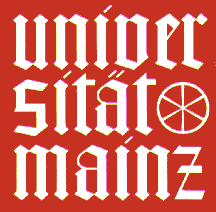Physics Research and Information
My primary research interests lie in the direction of few-body nuclear
physics, that is, study of the properties of deuterium, helium-3,
and helium-4. The studies are carried out using high-energy electron
beams at accelerator facilities in the USA and Europe.



The Thomas Jefferson National Accelerator Facility (TJNAF)
My group is heavily involved with the instrumentation
and physics program for
Hall A at
Jefferson Lab.
Recent activities in Hall A:
- Preparations for
E89-044 -
3He(e,e'p) at large recoil momentum.
- Dan Simon is performing
simulations for all the planned measurements to quantify the
effect that bremsstrahlung processes will have on our ability to
make the measurements. See
Dan's page
for the results of this project
(new 9 July 1999).
- Jesse Hines is working on implementing the
spectrometer optics in our simulation code to investigate our ability
to separate the two-body breakup peak from the continuum excitation.
- Experiment participation (taking shifts):
- Templon has been taking shifts on the HAPPEX
(parity-violating electron scattering) experiment in Hall A
- Dan Simon and Steven Becher will be taking shifts on the upcoming
photodisintegration/photoproduction experiments (August 1999).
- Steven Becher and I are working on a proposal to measure cross
sections for the reaction d(e,e'p) for high recoil momenta and a
complete distribution in the recoil-neutron momentum. This experiment
has implications for the behavior of FSI in (e,e'p) experiments and
possibly has some bearing on the proposed Color Transparency phenomenon
as well.
- I am participating in ongoing discussions about the future of the
data-analysis software for Hall A experiments. At the moment we are
discussing a possible future version which uses the
ROOT project as a framework and C++
as the programming language.
- Jesse Hines constructed a medium-sized multiwire proportional
chamber to use as a veto/calibration detector on the Photon
Calorimeter being constructed in Hall A. This device has been
installed in the prototype calorimeter stack and should be tested
with beam in July 1999.
- I am finishing a two-year term on the Hall A Coordinating
Committee, which is the governing body of the Hall A Collaboration.
I served as chair of this Committee for 1998-1999.
MAMI (Mainz, Germany)
I collaborate with my colleagues at MIT as part of the A1
collaboration at the
Institut für Kernphysik in Mainz, Germany.
Here we do research on the structure of the nuclei 3He and 4He, as well
as electromagnetic-interaction dynamics, using the (e,e'p) reaction.
In 1995, we did a series of L/T separations for these reactions with
the apparatus set to emphasize the quasielastic peak. In 1996 and 1998
we made measurements at energy transfers away from the quasielastic
peak, which will change contributions from Delta-resonance effects,
presumably allowing us to isolate the pure multinucleon effects if they
are present. I have spent a lot of time understanding bremsstrahlung
processes in (e,e'p) reactions in the context of this experiment, and
recently submitted a
paper on the results. You can follow this
link for various documentation about running at Mainz. This is
probably only interesting to other people who are running at Mainz!
NIKHEF-K,
Amsterdam, The Netherlands
I worked as a postdoc in the EMIN group at NIKHEF-K for three
years, and had a great time living in Amsterdam among those nutty
Dutch people (even married one of them.)
I also went in the fall
of 1996 to collaborate on an experiment searching for effects of
strong short-range nuclear effects in the 16O(e,e'pp) reaction.
Unfortunately, this fine laboratory has been shut down so my
involvement is limited to collaborations with NIKHEF researchers
at other laboratories (unfortunately as well, none of these other
laboratories are located in Amsterdam).
I got my Ph.D. from this place, and had a great time living in
Bloomington with all those nutty Hoosier people. The results of
my Ph.D. thesis work were published in Phys. Lett. B.
You can find an electronic version of this paper
here.
Scientific Computing on Linux Workstations
Please follow this link for detailed
information.
For tips on doing nuclear physics research, click
here.
Jeff Templon
Last modified: Mon May 19 23:37:12 EDT 1997





